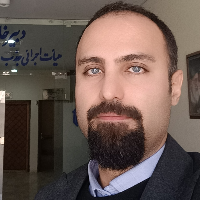Urban tourism development framework with Sanandaj branding approach
The result of the success or failure of the tourism development of destinations in the world depends on the mental image of tourists about them and the macro management of this attitude in the hands of the government and decision makers in the field of tourism. This situation is taken from the tourists' inference of the meaning of the place and their perception, and they start from the beginning of the stage of choosing travel destinations. One of the ways to overcome the current situation is to use new brand decisions in this industry. Since the late 1990s, the branding of objective and subjective elements has been welcomed as one of the sub-branches of tourism, with the aim of strengthening the infrastructure and urban and rural destinations. The main goal of the current research is to identify tourism development indicators and present the framework of Sanandaj city development based on branding approach. To collect the necessary data, survey-field method and document review have been used. The statistical community of the research of tourists visiting the tourist attractions of Sanandaj city and a statistical sample of 380 people have been selected. In order to evaluate the quantitative results of the questionnaire, multi-criteria decision analysis methods (FTOPSIS) were used, and for qualitative evaluation, the content analysis method and MAXQDA software were used. The results of the research according to the mental image of the sample show that the selection of national and international registered works, in the case of Sanandaj tourism destinations alone, cannot be a correct criterion, but any environmental, social, physical element that is acceptable in the minds of the majority of the society. It has the possibility to be considered as a potential brand. In this regard, while presenting the tourism development framework of Sanandaj city, suggestions are presented.
-
The city and the corona pandemic; Examining the social and spatial consequences of urban measures related to health
*
Interdisciplinary studies in architecture and urbanism development, -
Manifestation of the city from the perspective of the Hakim Nezami Ganjavi
Farzad Ketabollahi, *
Journal of Architecture and urbanism,



